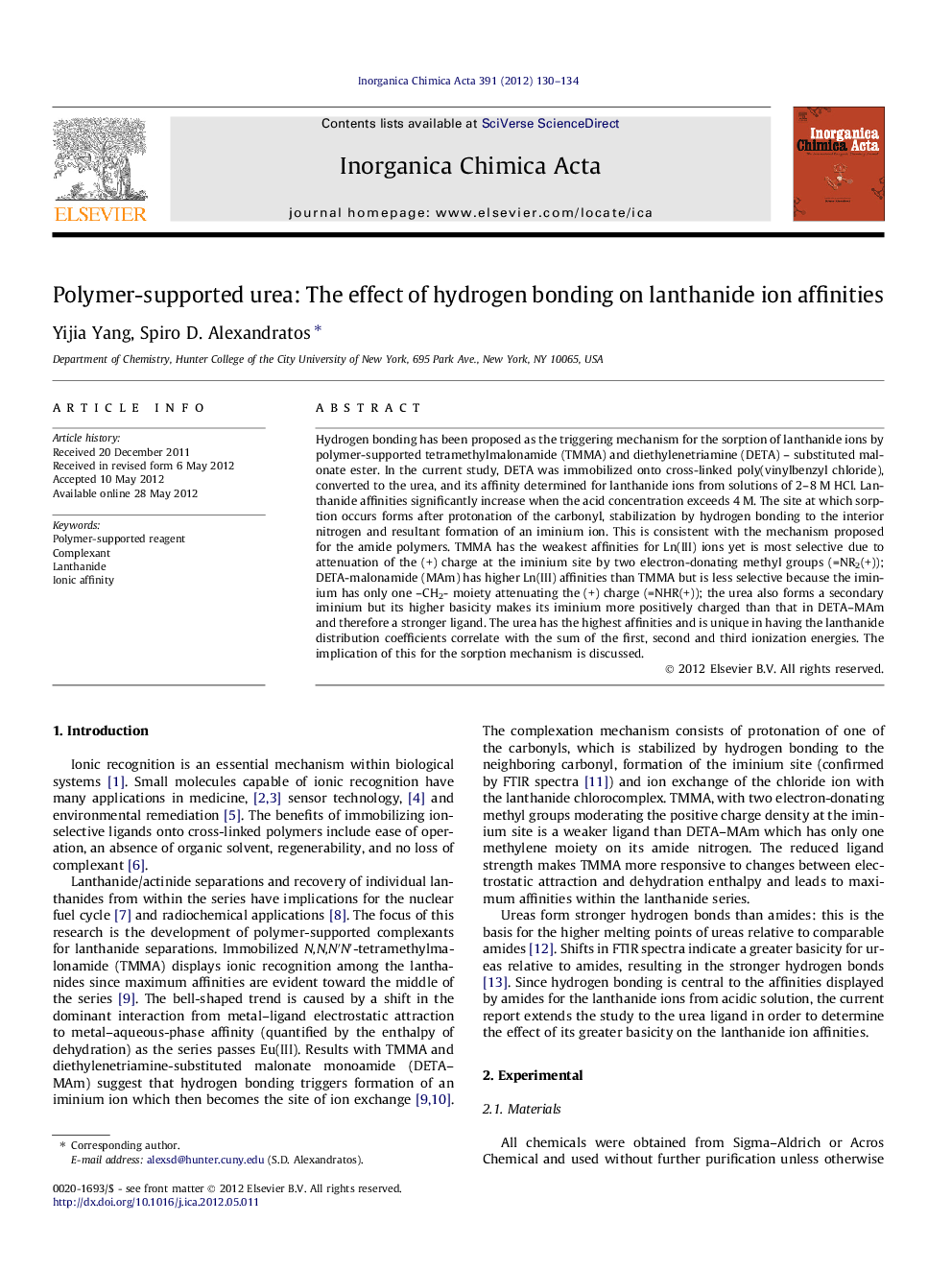| کد مقاله | کد نشریه | سال انتشار | مقاله انگلیسی | نسخه تمام متن |
|---|---|---|---|---|
| 1312404 | 1499196 | 2012 | 5 صفحه PDF | دانلود رایگان |

Hydrogen bonding has been proposed as the triggering mechanism for the sorption of lanthanide ions by polymer-supported tetramethylmalonamide (TMMA) and diethylenetriamine (DETA) – substituted malonate ester. In the current study, DETA was immobilized onto cross-linked poly(vinylbenzyl chloride), converted to the urea, and its affinity determined for lanthanide ions from solutions of 2–8 M HCl. Lanthanide affinities significantly increase when the acid concentration exceeds 4 M. The site at which sorption occurs forms after protonation of the carbonyl, stabilization by hydrogen bonding to the interior nitrogen and resultant formation of an iminium ion. This is consistent with the mechanism proposed for the amide polymers. TMMA has the weakest affinities for Ln(III) ions yet is most selective due to attenuation of the (+) charge at the iminium site by two electron-donating methyl groups (=NR2(+)); DETA-malonamide (MAm) has higher Ln(III) affinities than TMMA but is less selective because the iminium has only one –CH2- moiety attenuating the (+) charge (=NHR(+)); the urea also forms a secondary iminium but its higher basicity makes its iminium more positively charged than that in DETA–MAm and therefore a stronger ligand. The urea has the highest affinities and is unique in having the lanthanide distribution coefficients correlate with the sum of the first, second and third ionization energies. The implication of this for the sorption mechanism is discussed.
Immobilized urea is protonated in concentrated HCl solutions to form an iminium ion as the site at which lanthanide sorption occurs.Figure optionsDownload as PowerPoint slideHighlights
► Hydrogen bonding is the triggering mechanism for the complexation of lanthanide ions.
► An iminium moiety forms which acts as the site at which the Ln(III) species are sorbed.
► Distribution coefficients correlate with the sum of the first, second and third IEs.
Journal: Inorganica Chimica Acta - Volume 391, 30 August 2012, Pages 130–134